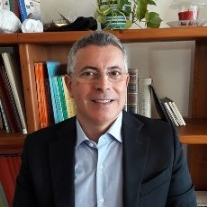Substrate Integrated Waveguide (SIW) and Its Applications II
A special issue of Applied Sciences (ISSN 2076-3417). This special issue belongs to the section "Electrical, Electronics and Communications Engineering".
Deadline for manuscript submissions: closed (20 May 2022) | Viewed by 12610
Special Issue Editor
Interests: fiber optics; long period grating (LPG) fiber devices; rare-earth doped fiber laser; microwave photonics; microwave devices
Special Issues, Collections and Topics in MDPI journals
Special Issue Information
Dear Colleagues,
During the last decade, substrate integrated waveguide (SIW) technology has been largely implemented for the construction of numerous microwave devices and circuits based on innovative solutions or re-proposing, by following a quasi-planar approach, well-known functionalities of classical waveguide-based components/systems. The possibility of fabricating shielded structures by employing planar geometries has provided an amazing way to fabricate innovative resonators exhibiting very high quality factors suitable for filter and oscillator applications, efficient radiating structures such as cavity-based antennas, miniaturized slot and horn antennas, compact coupling structures for multiplexing, multilayer/multi-way power dividers, wideband Magic-T, and so on. Multi-layered printed circuit board (PCB) or low-temperature co-fired ceramic (LTCC) technologies and the SIW approach allow a high feasibility, planar integration and packaging degree to be reached. As a consequence, the possibility of fabricating complex structures at low cost fulfils the increasing demand of highly sophisticated antennas for satellite communication, 5G and new generation wireless systems, terahertz systems, biomedicine, and a number of other applications.
Topics of interest to be covered by this Special Issue include, but are not limited to, the exploitation of SIW technology for:
- Fabrication of microwave components;
- Planar circuits integrations;
- Planar antennas and beam-forming techniques;
- Microwave photonics;
- 5G and wireless systems;
- Terahertz devices and systems;
- Satellite communications;
- Radar for automotive applications;
- Microwave applicators and wearable devices for medicine.
Prof. Dr. Francesco Prudenzano
Guest Editor
Manuscript Submission Information
Manuscripts should be submitted online at www.mdpi.com by registering and logging in to this website. Once you are registered, click here to go to the submission form. Manuscripts can be submitted until the deadline. All submissions that pass pre-check are peer-reviewed. Accepted papers will be published continuously in the journal (as soon as accepted) and will be listed together on the special issue website. Research articles, review articles as well as short communications are invited. For planned papers, a title and short abstract (about 100 words) can be sent to the Editorial Office for announcement on this website.
Submitted manuscripts should not have been published previously, nor be under consideration for publication elsewhere (except conference proceedings papers). All manuscripts are thoroughly refereed through a single-blind peer-review process. A guide for authors and other relevant information for submission of manuscripts is available on the Instructions for Authors page. Applied Sciences is an international peer-reviewed open access semimonthly journal published by MDPI.
Please visit the Instructions for Authors page before submitting a manuscript. The Article Processing Charge (APC) for publication in this open access journal is 2400 CHF (Swiss Francs). Submitted papers should be well formatted and use good English. Authors may use MDPI's English editing service prior to publication or during author revisions.
Keywords
- substrate integrated waveguide (SIW)
- microwave components
- planar circuits integrations
- planar antennas
- beam-forming techniques
- microwave photonics
- 5G systems
- wireless systems
- terahertz devices
- satellite communications
- radar for automotive applications
- microwave applicators
- wearable devices





